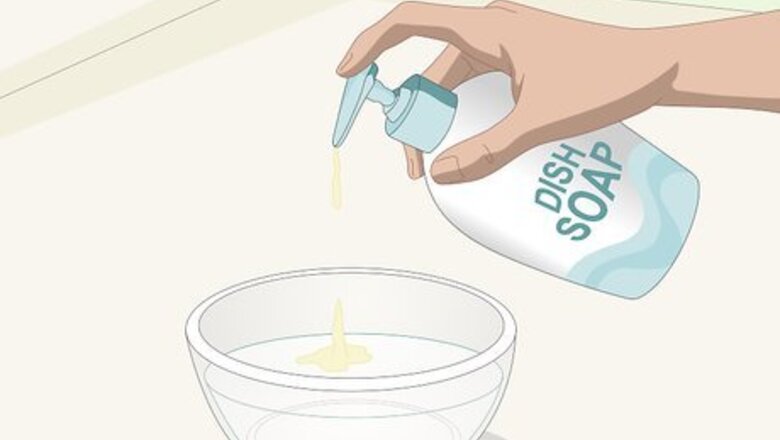
views
Washing the Plastic
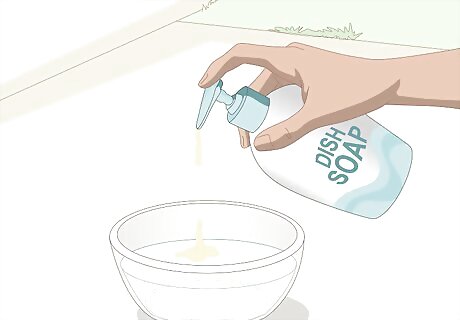
Make a mixture of dish soap and water. For most plastics, you can simply use a few drops of dishwashing soap in 1 cup (240 mL) of warm water. With car headlights or other car plastics, you may want to spring for a car soap, as it will be gentler on the surface of your car if you happen to get it past the plastic areas. If you're cleaning a large object, such as vinyl siding, you can just use plain water and a hose to spray it down as well as you can.
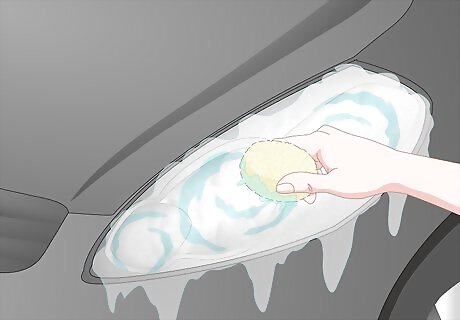
Rub the soap mixture in with a light scrubbing cloth or sponge. Dip the sponge or rag into the cleaning mixture. Rub it on the plastic in a circular motion. Your goal is to remove as much of the dirt and debris as you can from the surface, as it can continue to scratch the plastic if you don't. If the plastic you're cleaning is small, you can use a cotton ball and rubbing alcohol instead. If some of the dirt is stubborn, try a melamine sponge and water to help remove it.
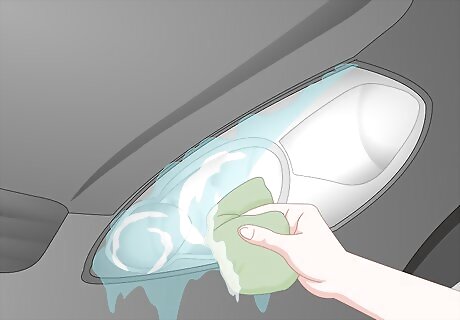
Rinse the object clean. Once the plastic is free from dirt, simply use a clean rag and water to wipe the soap off. You can also use a hose if you're cleaning headlights or run the object under a faucet if it's something smaller.
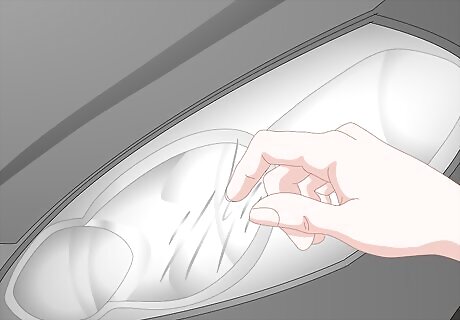
Check the depth of scratches with your nail. Run your nail lightly across the plastic, perpendicular to the scratch. If it doesn't catch, then the scratch is minor enough to use a mild abrasive. For deeper scratches, you'll need heavy-duty sandpaper.
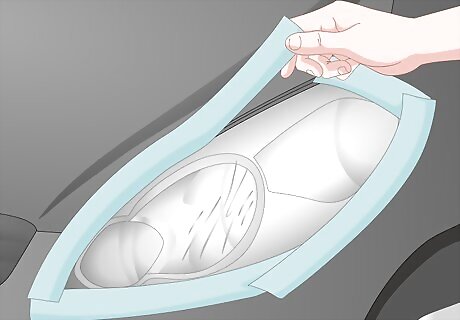
Apply masking tape or painter's tape to areas you don't want to be sanded. If you're buffing something like headlights, you don't want to scratch the surface around the headlights. After making sure the area is clean and dry, line tape up against the edge of the headlights on all sides. Use your fingers to smooth out the tape. Painter's tape works well for this because it comes up easily, but masking tape should suffice, too.
Getting Rid of Scratches
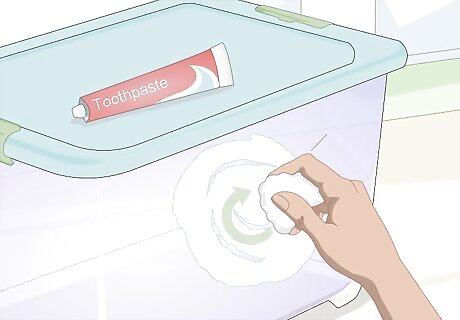
Use toothpaste for very soft plastics. Toothpaste buffs the plaque off your teeth, and it can work on shallow scratches. Simply put a pea-sized dab on a cotton cloth or even a clean toothbrush and rub the scratched area in a circular motion. Keep working until the scratches are gone. Wash the paste off to make it easier to see if the scratches are gone. This works best on plastics that are injection molded. You can tell because they'll have a small dimple on the bottom.
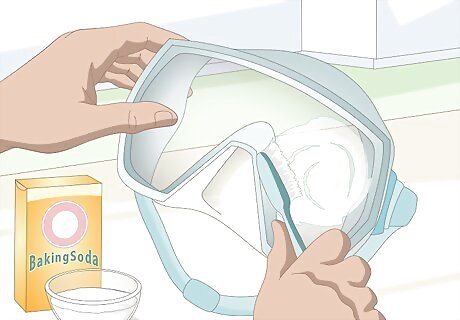
Try a mixture of baking soda and water for slightly more abrasive power. Pour a couple of spoonfuls of baking soda into a small bowl. Add enough water to make a thick paste. Use a cotton ball, cloth, or even a clean toothbrush to apply the paste to the plastic. Rub the area with small, circular motions to remove the scratches. Rinse off the paste from time to time so you can see how your work is progressing.
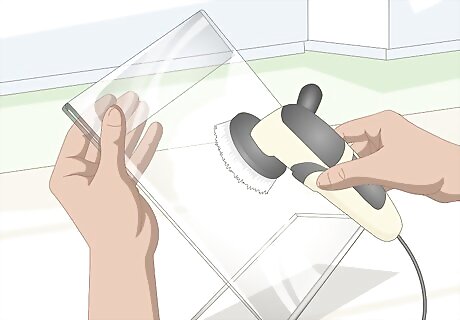
Smooth the scratch with a buffing wheel for a quick fix. For hard plastics like acrylic and polycarbonate, a buffing wheel is a good option. Turn the wheel on, and then hold the plastic up to the wheel where the scratch is. After a few minutes, the scratch should be gone. It will also work to buff up soft plastics, like motorcycle trim. You can also use a buffing wheel attached to a drill. Hold the wheel close to the plastic instead of the other way around. Both acrylic and polycarbonate are very hard plastics. Acrylic is tougher than polycarbonate, and you can identify polycarbonate by its dark edge.
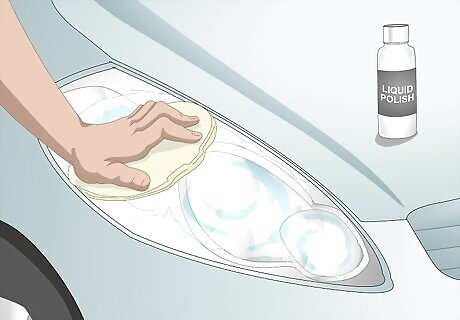
Try a liquid progressive polishing system for acrylic and polycarbonate. Start by putting the roughest polish on a rag and rubbing at the scratch in a circular motion until the edges of the scratch are mostly gone. Wipe it off. Then, move on to the next roughest, applying it in a circular motion. Once that's worn down the scratch, remove it with a rag. Finally, use the smoothest polisher to finish up. It should leave a smooth, scratch-free surface. You can purchase these at most home improvement stores. If you're working with polycarbonate, which has a dark edge, start with the second roughest. This will work well on car headlights.
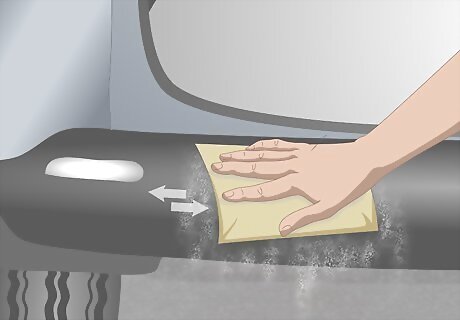
Try progressively finer wet sandpaper to get very deep scratches. Start by rubbing the area with 220-grit sandpaper dipped in water. Use a circular motion. After working on it for a few minutes, move up to 320 paper, then 400. The finer sandpaper will produce a smoother finish. Make sure to get sandpaper meant for wet sanding so it doesn't fall apart. You can also use sandpaper on car headlights.
Smoothing and Removing Oxidation from Plastic
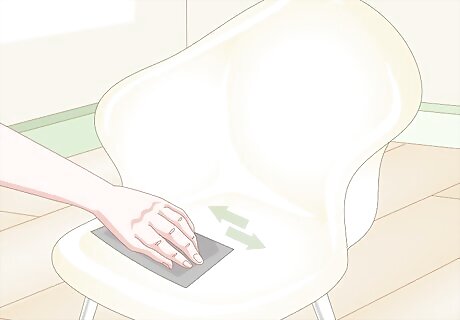
Apply finer sandpaper for a smoother finish on all plastics. Start with 800-grit paper, dipped in water. Rub the area in a circular motion to buff it out. After a few minutes, move up to 1,000-grit and then 2,000 grit. Always use wet/dry sandpaper for this process.
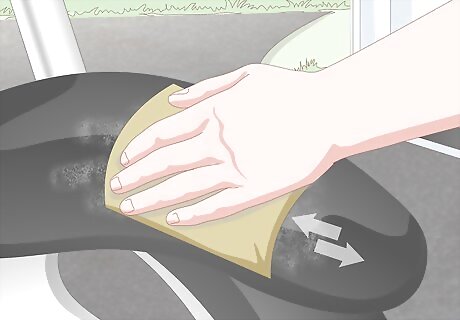
Use a buffing wheel to get a gleaming finish. This works well for soft plastics like motorcycle trim, as well as hard plastics like headlights. Turn the buffing wheel on and hold it with the edge against the plastic. For soft plastics, use a very light touch to get the best shine and make sure to keep it moving in a circular motion. You can purchase a buffing wheel attachment for the end of your drill. If you don't have one, use buffing papers instead, which are very fine sandpapers. You can use 3,000-grit and then 4,000-grit, for instance.
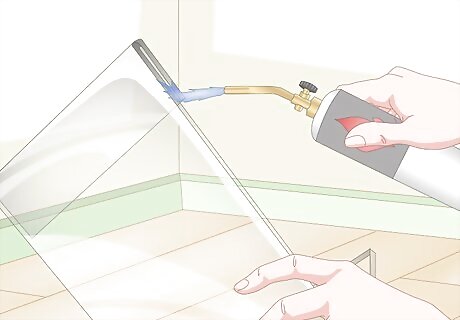
Run a map gas torch along the edge of acrylic. Acrylic plastic is so hard it can be polished with a flame. For a rough edge, hold the acrylic edge up using a flame-resistant glove. Turn the torch on, and run it along the edge quickly. It will heat the edge and smooth it out. If your acrylic edge has deep scratches, use 320-grit sandpaper on it first to smooth it out.
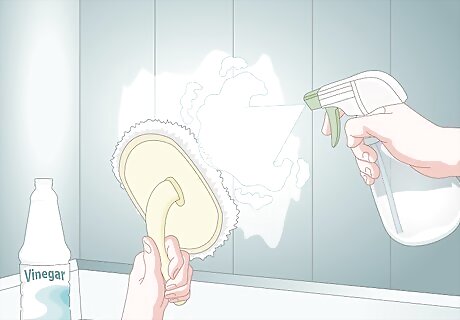
Try vinegar, water, and brushes to remove oxidation from vinyl paneling. Pour 5 cups (1,200 mL) of vinegar into 1 gallon (3.8 L) of water and stir to combine. Spray it on the area with a spray bottle, working on a small area at a time so it doesn't dry out. Scrub the area with a telescoping cleaning brush that has soft bristles. Keep moving around the area, spraying and scrubbing. When you're finished, spray the area down with a hose to finish. For a stronger cleaner, mix ⁄3 cup (160 mL) of a household cleaner, ⁄3 cup (79 mL) of laundry detergent, and 4 cups (0.95 L) of bleach into 1 gallon (3.8 L) of water. Be sure you DO NOT use a cleaner with ammonia. Mixing bleach and ammonia creates toxic fumes. Try a cleaner like Pinesol or Simple Green.

















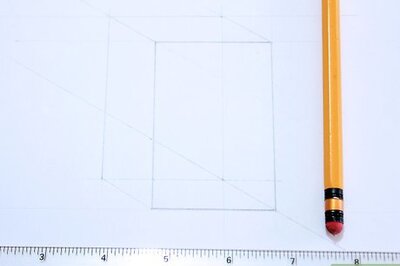
Comments
0 comment